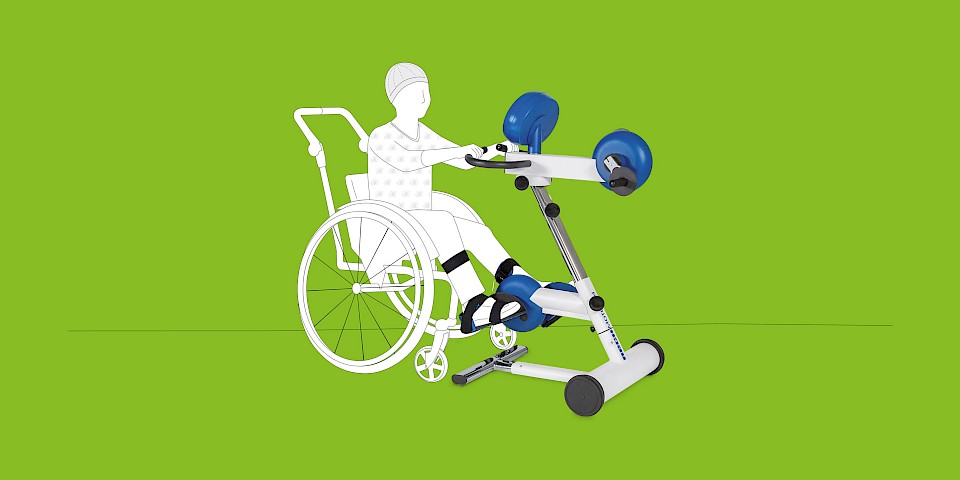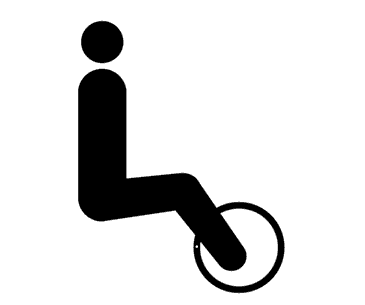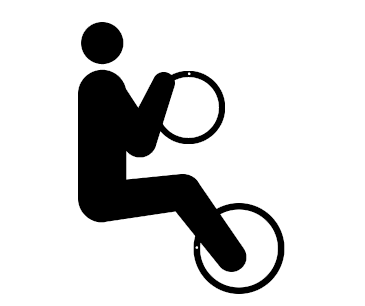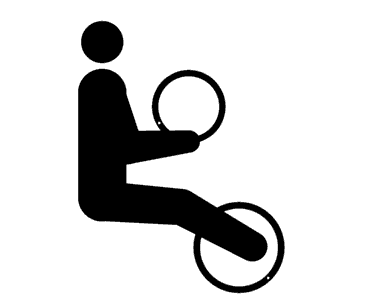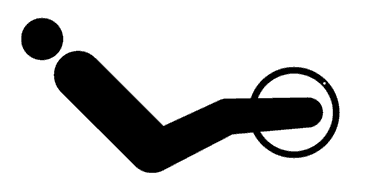Children
Living out the need for movement
Movement is the basis for getting and sustaining a healthy body. The MOTOmed movement therapy can help children with disabilities to live out their natural need for movement. With the MOTOmed gracile12 children train from a chair, sitting aid or wheelchair.
The passive MOTOmed movement therapy can contribute to a reduced muscle tone and counteract the development of muscle reduction and contractions with spastic paralysis. At the same time, motor supported movement therapy with the MOTOmed gracile12 enables active training – even with minimal muscle strength – hence improving walking ability.
With the motivation program MOTOmax, children can make their game character Max jump on the screen by moving their right and left body half as steady as possible. The simple principle of the game and the cheery game character reward the child for its physical effort and animate to longer and more regular training sessions.
Scientific study
"The regular application of a MOTOmed gracile12 movement therapy device can lead to an improved movement range and can open up new perspectives for the child’s social adaptation into modern society."
Nurmatova S, Khamraev F, Mirzaev A, Diehl W. The Effectiveness of Rehabilitations of Active and Passive MOTOmedTherapy on Children with Cerebral Palsy. Nevrologia 2012; 1(53) 34-37.
Configure your personal MOTOmed
Use the MOTOmed Product Configurator to configure your MOTOmed according to your requirements. Quickly, easily and without obligation. Try it out and configure your personal and individualized MOTOmed now.
MOTOmed Movement Therapy
MOTOmed Movement Therapy was developed for people with movement restrictions and complements physical, ergo and sports therapy measures. Users can train while seated in a wheelchair or from a chair. Patients in supine position use MOTOmed from a nursing bed or therapy couch.
In Germany, the device-based movement therapy with the MOTOmed is recognized as an aid for many indications by the statutory health insurance. It is worthwhile to inform yourself!
Therapy modes
passive
The effortless motor driven movement is ideal for the regulation of muscle tone, loosening stiff muscles and for early mobilization after long rests. Passive training stimulates blood circulation, digestion and joint flexibility.
assistive
In motor-supported movement therapy, the function MOTOmed ServoCycling enables easy transition from passive to active training. A motor-supported movement stimulates strength and endurance even with minimal muscle strength.
active
An active training with own muscle power against finely adjustable resistance levels strengthens leg, arm and upper body muscles and stimulates the cardio-vascular system.
Achieving best therapy goals through interval training
Alternating phases of strain and recreation (intervals) through active and passive training give a higher training stimulus which leads to a better therapy success.
Therapeutic goals
- Promote walking
- Reduce the consequences of lack of movement
- Reduce spasticity
- Activate residual muscle strength
- Strengthen the psyche and well-being
- Counteract fatigue
Videos
Scientific studies based on the MOTOmed movement therapy with children with neurological conditions
6.5) Damiano D.L., Stanley C.J., Alter K.E., Ohlrich L. (2017). Task-Specific and Functional Effects of Speed-Focused Elliptical or Motor-Assisted Cycle Training in Children With Bilateral Cerebral Palsy: Randomized Clinical Trial, DOI: 10.1177/1545968317718631
6.4) Holmes C., Shields N., Morgan P., Brock K., McKenzie G., Reddihough D. (2024). Home-based motorised cycling in Non-ambulant adults with cerebral palsy: a feasibility study, DOI: 10.1080/09638288.2024.2353234
6.3) Belogorova T., Vlasenko A., Mikhnovich V., Dutova N., Taskaeva T., Bugun O., Rychkova L. (2019). Rehabilitation of children with spastic and dyskinetic forms of cerebral palsy through transcranial exposure and biologically feedback. Archives of Disease in Childhood, 104(Suppl 3), A352., DOI: 10.1136/archdischild-2019-epa.833
6.2) Nurmatova S., Khamraev F., Mirzaev A., Diehl, W. (2012). Effectiveness of motor-assisted MOTOmed movement therapy in the rehabilitation of children diagnosed with infantile cerebral parese. Nevrologiya, 1(53), 34-37.
6.1) Shen M., Li Z.P., Cui Y., Kang L.H., Xie Z.Z., Yao X.H., Gu Q.Y. (2009). Effects of Motomed gracile leg training on the lower limbs function in children with spastic cerebral palsy. Chinese Journal of Rehabilitation Theory and Practice, 9, 828-829.




